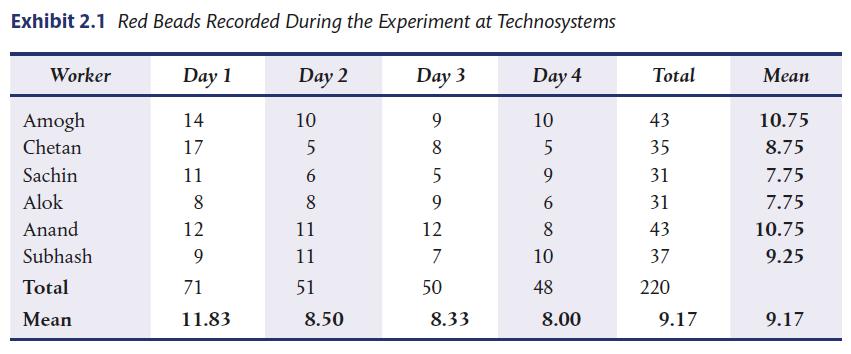The experiment included a box comprising 4,000 wooden beads of which 800 were red beads and 3,200
Question:
The experiment included a box comprising 4,000 wooden beads of which 800 were red beads and 3,200 were white beads. There was a paddle with 50 bead-sized depressions, a second smaller box for mixing the beads and six willing workers as participants. There were two inspectors who would count the beads independently, a chief inspector who would verify the counts, an accountant to record the counts and a customer who would not accept red beads.
The job at hand entailed producing white beads, and the standard for each worker was set at fifty white beads per day. No two beads were exactly alike. The paddle responded to the red and white beads differently and in return the beads also responded differently to the paddle.
Additionally, the depressions in the paddle were also seen to be different in terms of size.
The daily production operation for each worker included:
1. Pouring the beads from the first box into the second box and then back into the first box to mix the beads.
2. Dipping the paddle into the first box without shaking it.
3. Carrying the loaded paddle to each inspector for separate counts and subsequent verification 4. Dumping the day’s work back into the supply box.
The six workers performed this operation four times to represent four days’ work. The results of this are shown in Exhibit 2.1.

Question For Discussion
1. What does Exhibit 2.1 reveal about the red beads recorded during the experiment at Technosystems?
2. What is the point of the red beads experiment in this case study?
3. What is the message conveyed by the case study?
Step by Step Answer:






